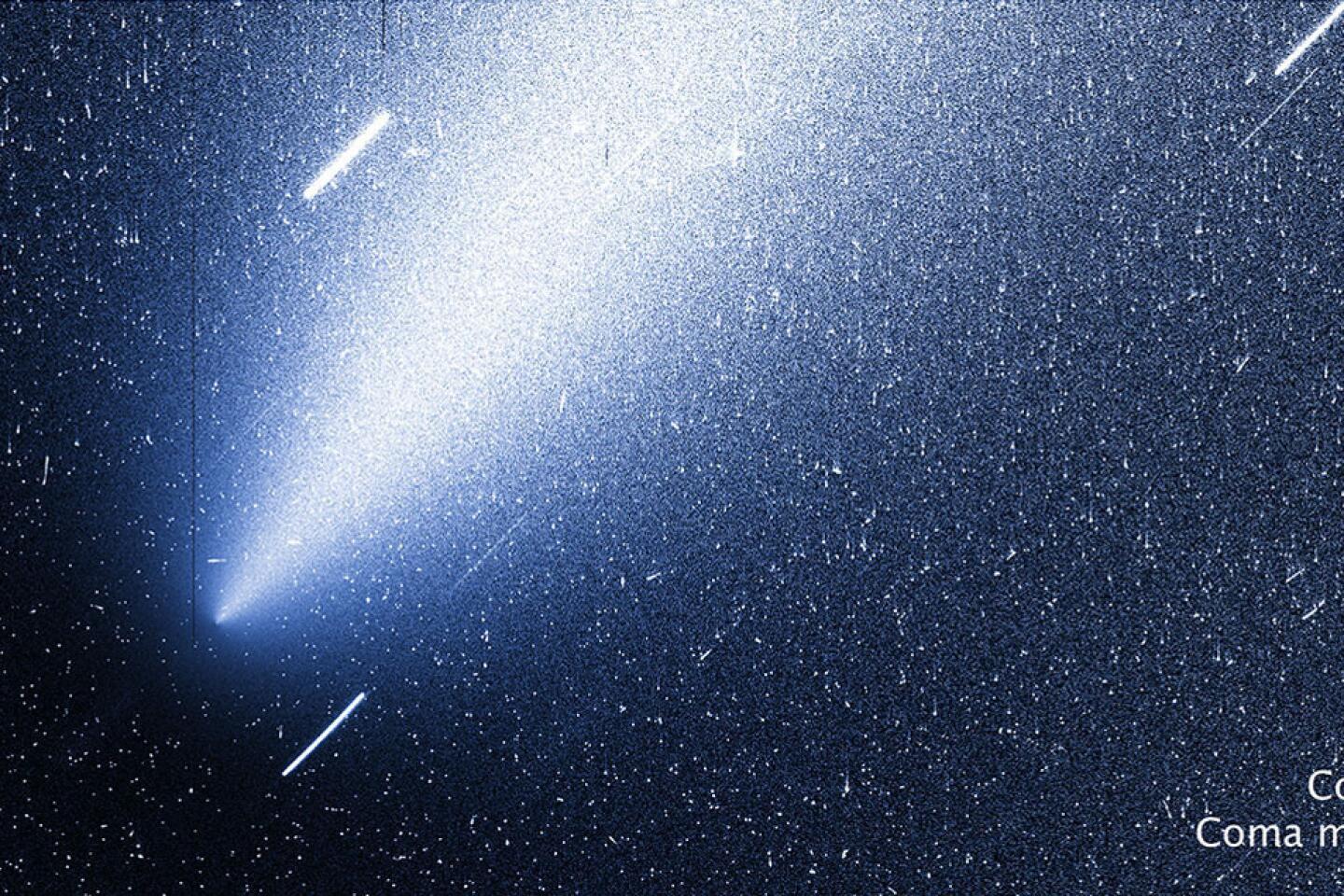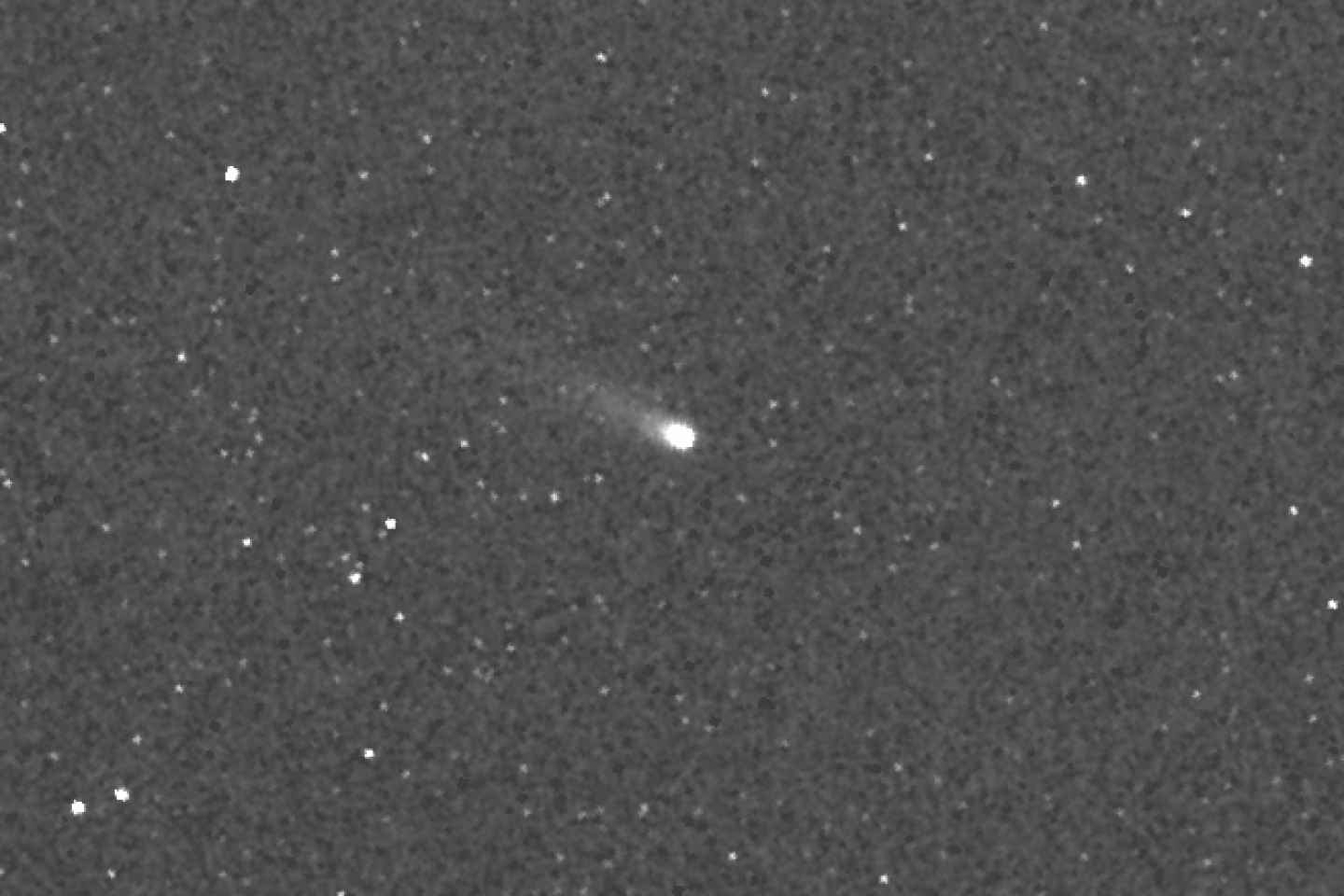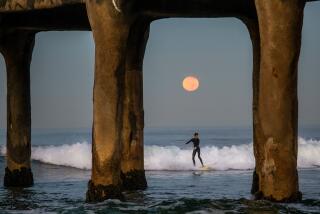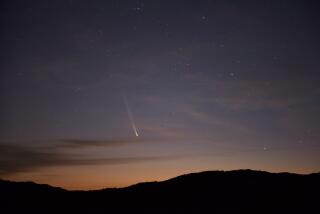Comet ISON is now visible to the naked eye, but for how long?
- Share via
Comet ISON is brightening, and if you look up to the sky around dawn, you just may be able to see it without a telescope or binoculars.
“It kicked up its brightness like crazy in the past couple days,” said Carey Lisse, coordinator of NASA’s Comet ISON observing campaign. “We now have a naked-eye object.”
As of Friday morning, astronomers around the world were reporting that the comet was around 4.8 magnitude. Most people can see stars that shine at fifth magnitude -- the lower the magnitude, the brighter the object.
And even cooler: The comet appears to be getting brighter.
Unfortunately, the moon will also getting brighter over the next few days as it grows more full, and its light may interfere with your ability to see ISON. If you are willing to try anyway, Lisse said you should head away from the city lights to a place with a dark sky (somewhere like Joshua Tree would be ideal) just a bit before dawn -- around 5 or 5:30 a.m. local time and then look east.
PHOTOS: Comet ISON journeys through the solar system
“The easiest way to find it is to look for Mars, and then draw a line down to the east -- right where you think the sun is going to rise,” he said.
Lisse can’t say for sure why ISON got brighter all of a sudden, but said it is possible that the comet has suffered an explosion that caused an initial uptick in brightness, but will ultimately lead to the comet’s demise even before its scheduled close approach to the sun on Nov. 28.
A happier possibility is that the comet’s nucleus has a thick outer crust that the heat of the sun has only recently been able to penetrate. But now, as the comet moves toward Mercury, and ultimately a close swing by the sun, it is releasing a store of previously frozen gases, and the gas is reflecting sunlight making the comet appear brighter to us here on Earth.
Regardless of what’s going on, the comet is putting on a fairly good show right now. Lisse said it looks a bit like a green lollipop with a fuzzy emerald head trailed by a pale white tail.
For pictures of Comet ISON, check out our photo gallery above.
If you consider yourself team Comet ISON, then follow me on Twitter for more like this.
ALSO:
Look up! Annual Leonid meteor shower peaks this weekend
Scientists find black hole spewing iron, nickel in powerful jets
NASA’s glamour shot of Saturn includes Earth, moon as tiny specks









